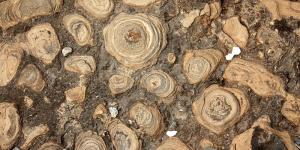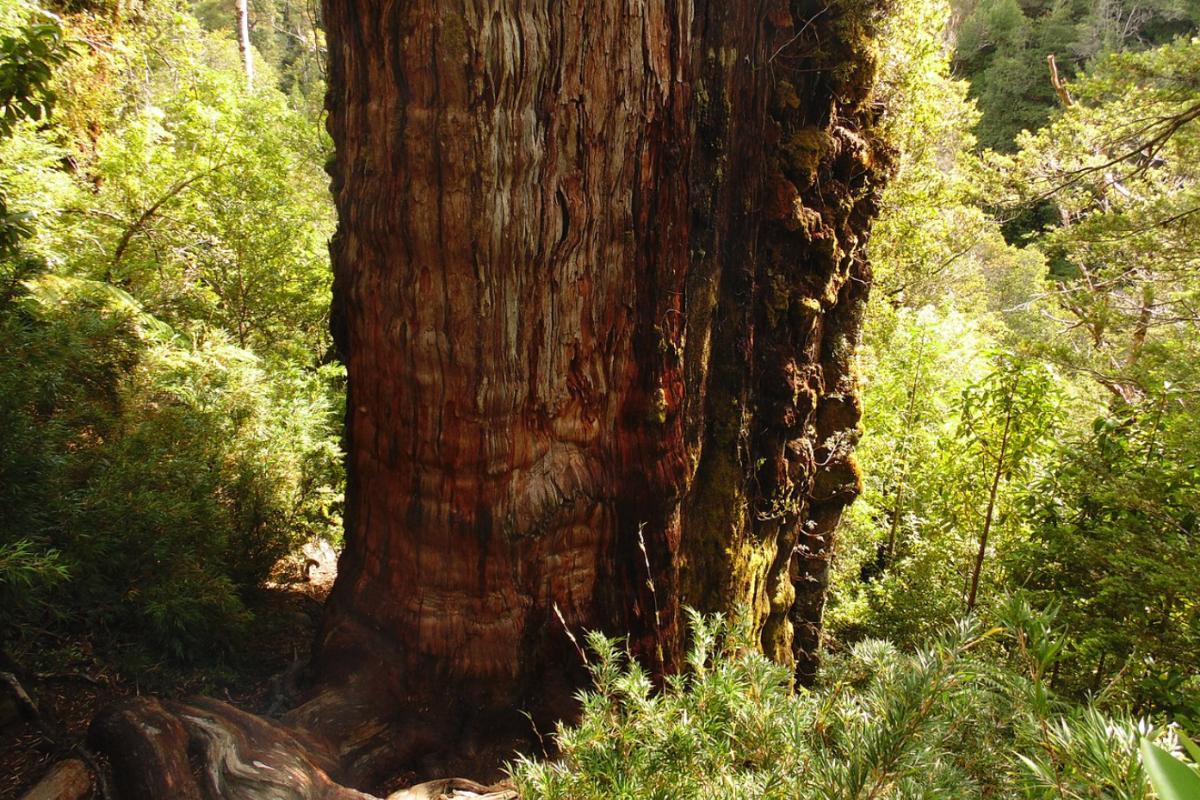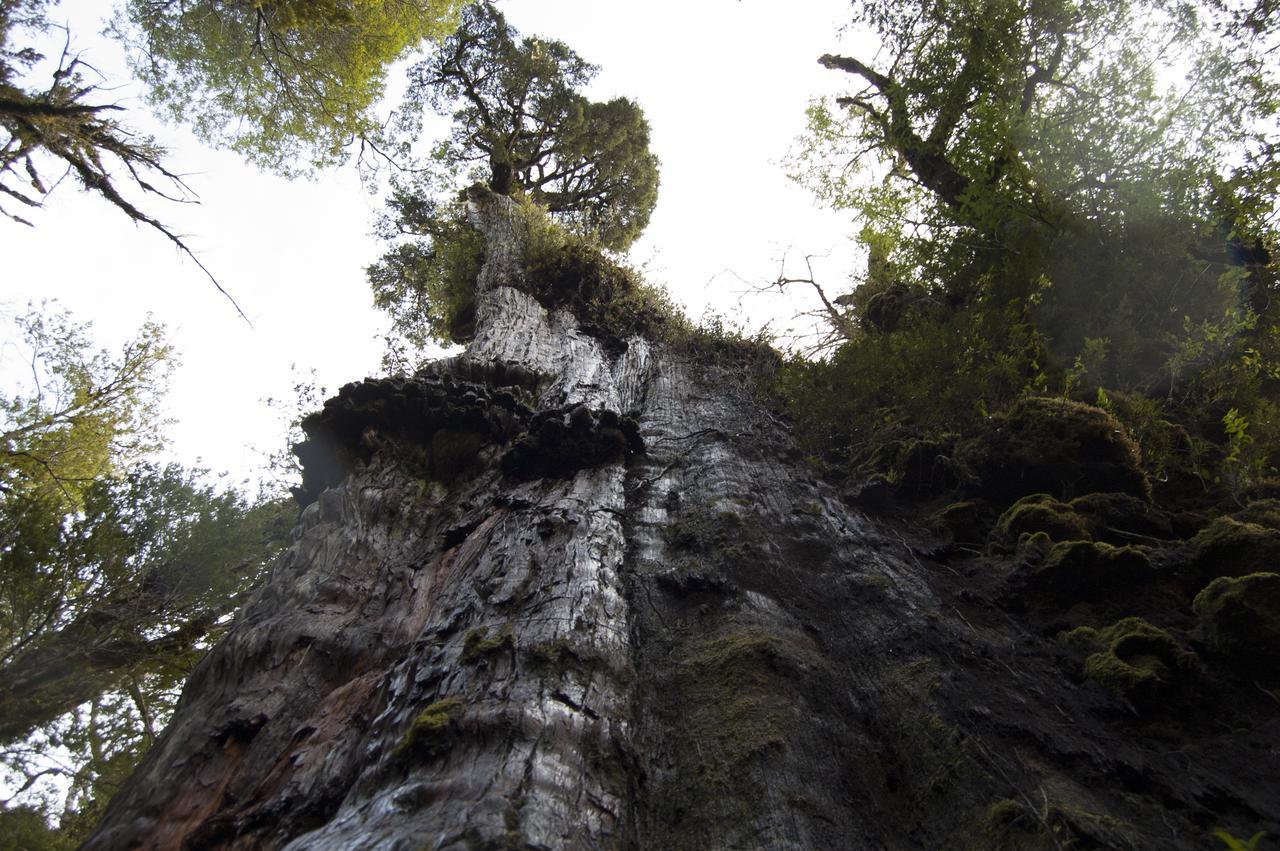Where Is the Oldest Tree in the World?


The world's oldest tree is the Great-Grandfather Tree, a huge Patagonian cypress (Fitzya cupressoides) that is estimated to be over 5,400 years old. It is located in Chile in South America. What is quite amazing is that it is only recently that this tree was discovered to be the oldets in existence. This has a lot to do with where the oldest tree in the world grows and how its ecosystem has allowed it to remain relatively untouched for millennia.
If you want to know more, thedailyECO finds out by asking where is the oldest tree in the world? We find out more about this tree's location and how it has helped the tree to achieve such a landmark age.
What is the oldest tree in the world and where is it?
The oldest tree in the world is a huge Patagonian cypress (Fitzroya cupressoides), commonly known as the Great-Grandfather tree. This nickname is due to its age, although you'd be hard pressed to find a great grandfather matching the age of this tree. It is located in the Alerce Costero National Park, a protected natural area in Chile The Encyclopedia of Life has considered this specimen to be the oldest tree, since it has an estimated age of more than 5,400 years.
While the Great-Grandfather cypress is the oldest, there are many different types of trees you can discover in our related guide.
Characteristics of the oldest tree in the world
Now we know where the oldest tree in the world is located, we might want to know a little more about what makes it so special. In addition to its age, we can find the following characteristics of the world's oldest tree:
- The native peoples of these countries, the Mapuches, know it as lahuán or lawan, meaning ‘grandfather’ in their native language.
- It is a species of conifer endemic to the Valdivian and Andean-Patagonic forests of Chile and Argentina.
- It grows in humid areas where rainfall is high and occupies poor quality or poorly drained soils. Due to its relative hardiness, it finds little competition from other trees.
- The Great-Grandfather reaches 98 feet (30 m) in height and its trunk has a diameter greater than 13 feet (4 m).
- F. cupressoides is a perennial species so it maintains its foliage throughout the year. Its leaves are scale-shaped (squamiform) arranged in whorls in groups of three, on thick and tortuous branches. Learn more about these types of plants with our article on whether hibiscus is a perennial plant.
- Its trunk is straight with thick, fibrous bark which brown in color and bears the presence of longitudinal grooves.
- Its seed-bearing organ is a cone (or strobile), inside which are the winged seeds that are dispersed by the wind. The wings help to achieve lift when the wind catches them.
- Using dendrochronology, a science that allows us to analyze the growth rings formed inside the trunk, the age of Great-Grandfather could be estimated. It also helps us to reconstruct possible climatic events which happened during its lifetime.
- The wood of this species is of great value and natural durability, which is why it has been highly exploited by humans. Unfortunately, this species of cypress is now considered a vulnerable species.
- It is included in Appendix I of CITES (Convention on International Trade in Endangered Species of Wild Fauna and Flora), which restricts its export.
- It was declared a natural monument in 1977, so its felling is prohibited. Only wood from dead trees can be used with authorization from the National Forestry Corporation.
- Due to the increase in global temperature and intense tourism, the Great-Grandfather is deteriorating and according to scientists its stable growth has been altered.
One of the reasons it has been so difficult to reach the tree is that it is located on a ravine in the park. However, since it has been posited as the world's oldest tree, hikers have been able to reach it and have their pictures taken. It is also difficult to determine the exact age because it is difficult to count the rings without cutting down the tree.
Borers can be used to extract wood and count rings, but these too can cause damage. For this reason, a smaller sample was taken and the age estimated from this sample. We can say for certainty that it is at least 5,000 years old, but it is likely older still.

Other oldest trees in the world
While the Great-Grandfather Tree in Chile is believed to be the oldest tree in the world, it is difficult to know exactly for sure. The following trees are some which are thought to rival this tree in terms of age:
Methuselah
Methuselah is a long-lived pine belonging to the species Pinus longaeva located in the Inyo National Forest, in central California, United States. It is considered another of the oldest living (non-cloned) trees, with an estimated age of more than 4,850 years. Before the Great-Grandfather was analyzed for age, Methuselah held first place as the oldest tree in the world.
Abarkuh Cypress
The Abarkuh or Zoroastrian cypress (Cupressus sempervirens) is another of the oldest trees on the planet and is found in Abarkuh in the Yazd province of Iran, where it has been declared a national natural monument. It is more than four thousand years old and may be the oldest form of life on the Asian continent.
Patriarch of Floresta
The Patriarca da Floresta (Cariniana legalis) is one of the largest and longest-lived tree species in the Atlantic Forest. Particularly this specimen, located in Brazil in the Vassununga State Park, is approximately 3,200 years old. Learn about trees and animals that live in temperate forests like the Atlantic forest.
Llangernyw Yew
The Llangernyw yew is an old yew (Taxus baccata) found in the churchyard in the village of Llangernyw in the Conwy region of Wales. Although there are estimates that it is between 4,000 and 5,000 years old, other studies indicate that it is 1,500 years old. Regardless of these figures, it is one of the oldest trees in Great Britain and the world.
Olive tree of Vouves
This olive tree (Olea europaea) is a very old olive tree whose age remains a topic of debate to this day. This is because some researchers have estimated it at 2,000 years while others maintain that it is 4,000 of age. This olive tree lies in a town called Ano Vouves on the island of Crete in Greece. In 1997, it was declared a protected natural monument.
Now you know where the oldest trees in the world are located, you may want to know more about trees with our related articles. You can do so by finding out the different types of cherry trees and the different types of pine trees that exist.
If you want to read similar articles to Where Is the Oldest Tree in the World?, we recommend you visit our Facts about nature category.
- Fisher., A. (2022) “The story of 'Great Grandfather', the world's oldest tree dating back to before Stonehenge.” National Geographic. Available at: https://www.ngenespanol.com/el-mundo/cual-es-el-arbol-mas-viejo-de-la-tierra-y-donde-se-encuentra/
- Lara, A., Villalba, R., Aravena, JC, Wolodarsky, A., & Neira, E. (2000). Development of a network of chronologies of Fitzroya cupressoides (Alerce) for Chile and Argentina. Dendrochronology in Latin America, edited by: Roig, F., Mendoza, Universidad Nacional de Cuyo, Mendoza, Argentina, 217-244.






